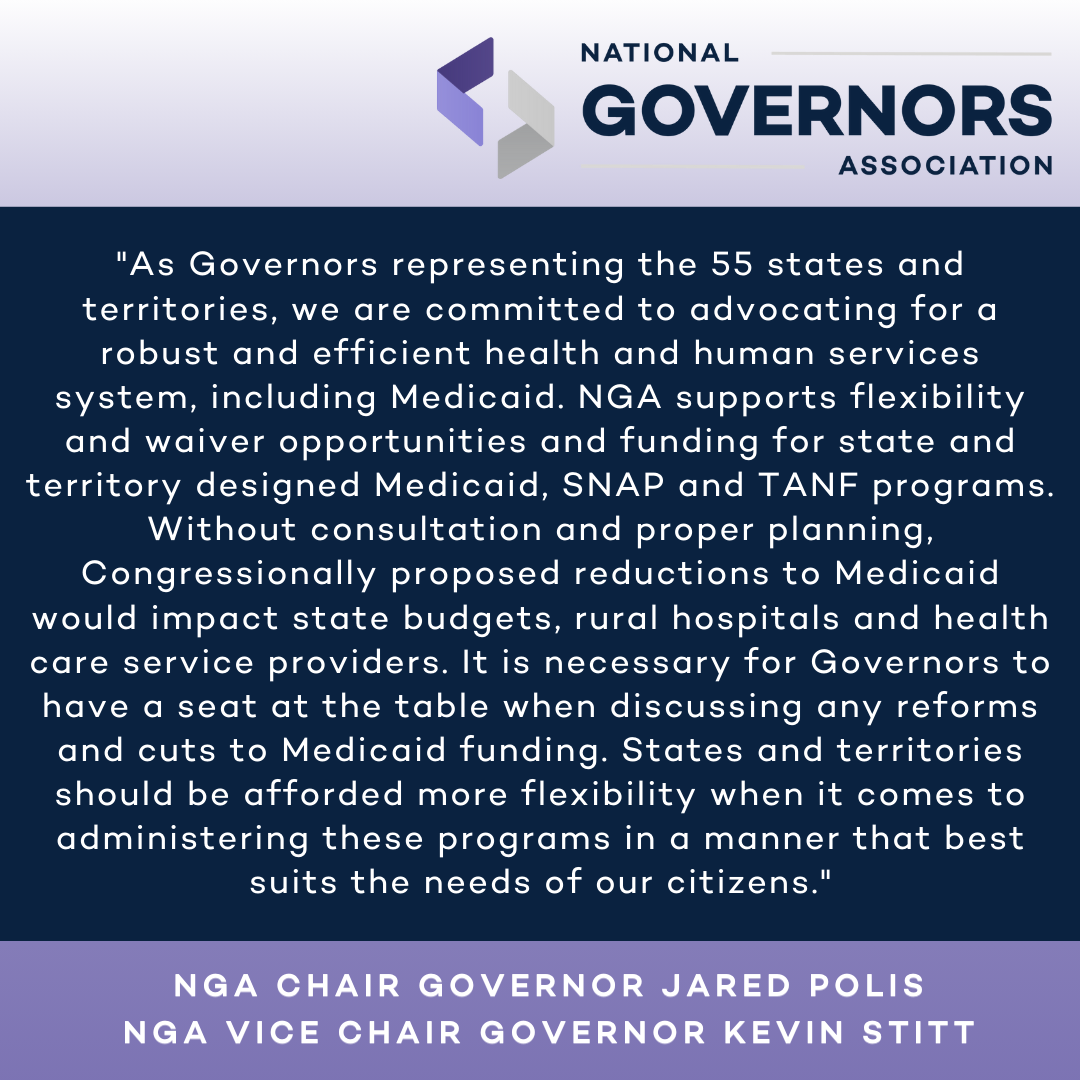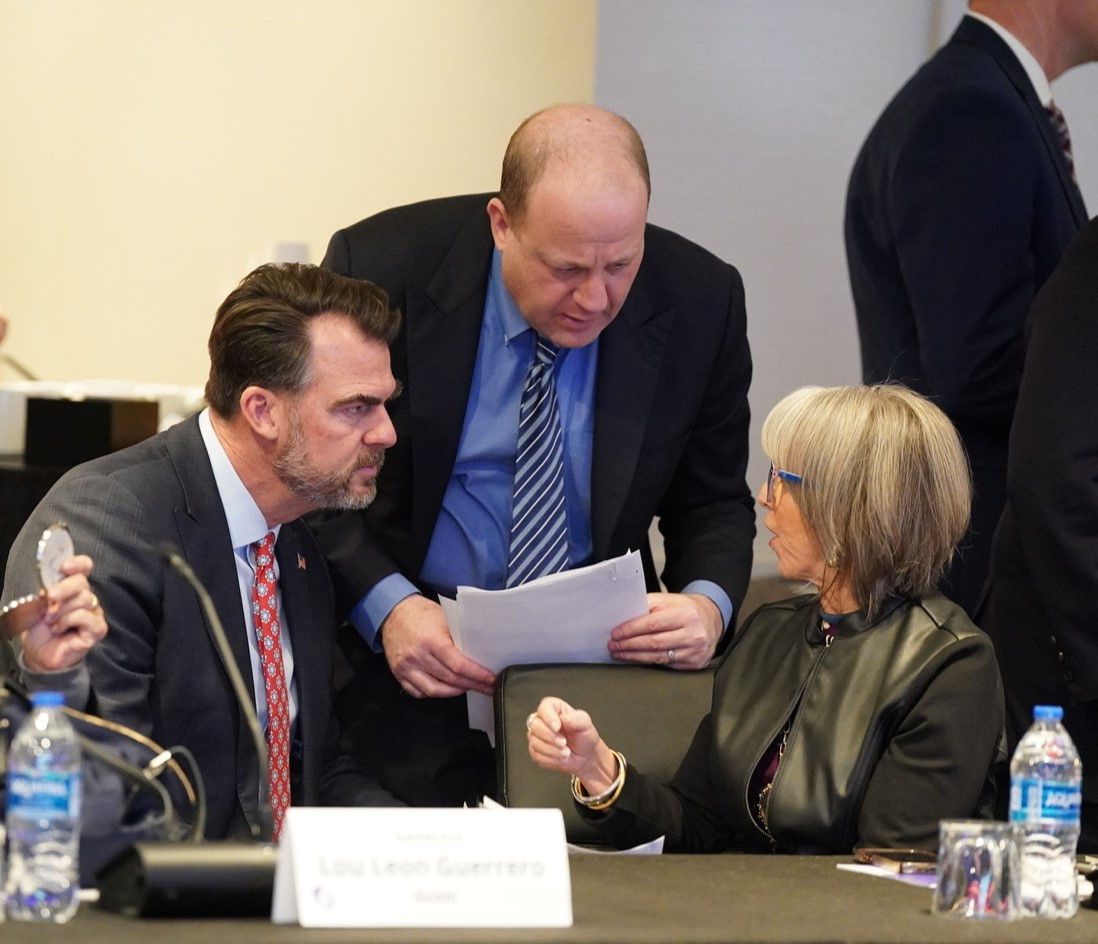As Governors focus on vaccinating as many individuals as possible, COVID-19 antibody treatments will continue to play an important role in treating COVID-19 positive patients who are at high risk for severe disease.
Introduction
Since November 2020, the U.S. Food and Drug Administration (FDA) has issued emergency use authorizations (EUAs) for three COVID-19 monoclonal antibodies (antibody treatments) to treat those age 12 and older with mild to moderate COVID-19 at high-risk for progressing to severe illness. The treatments are laboratory-made proteins that mimic the immune system’s ability to fight off harmful viruses and data suggest these antibody treatments reduce hospitalization rates or emergency room visits and may reduce viral load as well as alleviate symptoms.
Although demand for COVID-19 antibody treatments was expected to far outstrip initial supply, roughly 75 percent of treatment courses allocated to states remain available. There are several factors that have contributed to this unexpected mismatch between supply and use. First, states receive allocations of COVID-19 antibody treatments from the federal government and generally distribute them to hospitals and health systems who request it. However, many hospitals and health systems have been slow or unable to set up outpatient infusion sites for treatment. Operational challenges, including lengthy testing turnarounds when patients require fast referrals, limited workforce capacity, as well as limited awareness of and confidence in these treatments among patients and providers have all contributed to low utilization across the states.
Second, data on the three authorized COVID-19 antibody treatments are limited, primarily based on information from Phase II trials with small numbers of patients. As a result, states, providers, and academic experts have called for additional evidence to inform use across a variety of domains and several randomized trials are underway. However, previous data and new findings from ongoing clinical trials underscore the key role of COVID-19 antibody treatments to reduce hospitalization and death from COVID-19.
In light of these challenges, this paper presents ways Governors can increase utilization of COVID-19 antibody treatments and highlights select promising state practices. Promising practices include: establishing regional infusion sites, partnering with medical professional associations, co-locating infusions at testing sites, generating real-world evidence by tracking patients for side effects and hospitalizations, strategic communications, and other approaches to increase provider readiness and promote greater uptake. Although COVID-19 cases are declining, the increasing prevalence of new variants — as many individuals remain unvaccinated — underscores the need to promote and adopt strategies that increase utilization of COVID-19 antibody treatments. Until many more individuals are vaccinated, these treatments will be critical for those who continue to be susceptible to severe COVID-19 disease.
Considerations For Increasing Utilization Of Covid-19 Antibody Treatments
As vaccine supply expands, states can build on lessons learned and augment the way they allocate and distribute COVID-19 antibody treatments to increase use, decrease burden on overwhelmed hospital systems, and help prevent severe illness and death. Governors and their staff may consider doing the following to increase the use of these treatments:
Gubernatorial Leadership
- Establish a vision to substantially increase use of COVID-19 antibody treatments, particularly in high-risk areas, and communicate with the public so they know more about the treatments and have confidence in their safety and effectiveness.
- Identify champions who will carry the message to different types of providers – including primary care providers who refer patients – to reach a broader patient population, such as those not engaged with an integrated healthcare system.
- Direct state agencies overseeing distribution to partner with state-based provider, nursing home, and hospital associations to increase provider readiness and obtain buy-in across the continuum of medical personnel involved from testing to infusion.
- Dedicate funding to support investments in regional infusion centers, increases in workforce capacity, and the development of processes to enable prompt referrals for eligible patients after receiving a positive COVID-19 diagnosis.
- Centralize decision-making, through an interagency task force with appropriate authorities, to promote these antibody treatments as an option for all eligible patients and as a way to nimbly respond to community and congregate care outbreaks.
- Direct state agencies overseeing distribution of COVID-19 antibody treatments to collect followup safety and effectiveness data on initial infusions and publicly report this information to inform clinical practice.
- Ensure equity in COVID-19 antibody treatment distribution by employing targeted strategies that provide education and increase access to populations that have been disproportionately impacted by the pandemic, such as communities of color.
Diversified Infusion Sites and Increased Workforce Capacity
- Establish regional infusion centers to minimize transportation barriers and ensure antibody treatments are broadly available to all eligible patients.
- Utilize sites beyond in-patient hospital settings (e.g., nursing homes, long-term care facilities (LTCFs) as alternative care sites, convention centers, outpatient clinics, Federally Qualified Health Centers (FQHCs), shutdown dental clinics, and acute care hospitals) to preserve hospital workforce capacity.
- Enable screening for high-risk patients at testing sites to quickly identify eligible patients and allow for prompt referral to local infusion sites or providers.
- Expand scope of practice for emergency medical services (EMS) professionals to provide infusions for homebound individuals and those in long-term care settings.
- Support efforts to streamline the test-to-infusion timeline, such as creating centralized provider referral systems and multiple avenues for patients to access COVID-19 antibody treatments in their community.
- Provide staffing resources for non-clinical and clinical support at infusion sites, where necessary.
Promising State Practices To Increase Utilization Of Covid-19 Antibody Treatments
Alabama
When COVID-19 antibody treatments were authorized for emergency use, Alabama allocated the treatments to large hospitals across the state. At the time, hospitals across Alabama were overcapacity and seeking opportunities to alleviate the burden on their intensive care units from COVID-19 patients. Providers and hospital pharmacy directors saw COVID-19 antibody treatments as an opportunity to prevent hospitalizations but finding space and staff proved challenging. By shifting their model from treating patients at in-patient settings to establishing separate infusion sites with dedicated staff, Alabama hospitals were able to significantly increase utilization.
The state credits their hospitals establishing separate infusion sites as key to increasing utilization of COVID-19 antibody treatments. Hospitals that were able to increase capacity through outpatient infusion sites reached out to primary care physicians in their area to let them know COVID-19 antibody treatments were available and providers could refer eligible patients to these sites. Additionally, direct outreach to community-based providers increased utilization through greater awareness of product availability and local infusion sites. Although this effort has largely been driven by hospitals, a significant push from referring primary care physicians has helped to facilitate increased utilization. A few urgent care and physician offices also began treating patients in a few local communities.
To support this process, the state partnered with the Alabama Hospital Association to educate providers on the use of COVID-19 antibody treatments. In partnership with the state, the Alabama Hospital Association sent a survey to their members and other healthcare facilities throughout the state to gauge willingness and capacity to infuse patients. The survey queried how many non-hospitalized patients each provider or facility anticipated treating for COVID-19 during the two-week allocation period to inform allocation decisions. This process was repeated by the Alabama Hospital Association every two weeks for hospitals and community-based providers to respond and request allocations.
As the supply of COVID-19 antibody treatments increased, the state was able to meet all requests for allocations from hospitals and community-based providers. Hospitals that increased utilization of COVID-19 antibody treatments have anecdotally seen a reduction in hospitalizations of COVID-19 positive patients. LTCFs in Alabama received COVID-19 antibody treatments allocations through the U.S. Department of Health and Human Services (HHS) Assistant Secretary for Preparedness and Response’s (ASPR’s) Special Projects for Equitable and Efficient Distribution (SPEED) program, which allocates doses directly to certain providers separate from bi-weekly state allotments. As smaller hospitals, physician practices, urgent care facilities, and dialysis centers increase their capacity to provide COVID-19 antibody treatments, expanded access in rural areas of the state is being achieved.
Maryland
Maryland has centered equity in their planning for allocation and distribution of COVID-19 antibody treatments by prioritizing accessible coverage within each of the five regions of the state. Gubernatorial leadership has been key to the success of the state’s efforts. Governor Hogan has provided effective leadership and communication, including regularly speaking to the public to increase awareness of COVID-19 antibody treatments and make clear that increased utilization of these products can help prevent severe illness and decrease the burden on overwhelmed hospitals and health systems throughout the state. Maryland committed to making this effort successful by reassigning staff from across state government to leverage existing, collective expertise. The state engaged the Deputy Secretary of the Behavioral Health Administration to lead the program along with the Executive Director of the Maryland Primary Care Program (MDPCP). The state engaged MDPCP, a network of over 2,100 primary care physicians and 563 practice sites under the Maryland Department of Health. Maryland used the state Health Information Exchange (CRISP) to provide an online bidirectional referral form to facilitate efficient referrals to any COVID-19 antibody treatment infusion site. The state informed and engaged this provider network through weekly webinars, direct emails and state employed coaches. In this way, the state leveraged existing partnerships between government and the existing primary care workforce to increase provider readiness and obtain buy-in. Moreover, the state supplied primary care providers with rapid COVID-19 antigen tests to streamline the time between symptom onset and treatment administration. As a result of these efforts, Maryland has seen an increase in COVID-19 antibody treatment utilization for eligible patients from 1% in the first few weeks of the program to 20% by week 14.
Maryland has also invested in education of medical associations, pharmacy networks, referring providers, and the general public. All hospitals throughout the state are organized under the Maryland Health Services Cost Review Commission and the Maryland Hospital Association. Using this centralized structure, the state met with hospital executives to educate them about COVID-19 antibody treatments. Additionally, the state’s Skilled Nursing Facility Task Force provides technical assistance to skilled nursing facilities across the state and promotes utilization of these treatments. Beyond promoting and educating all necessary stakeholders, the state provides significant resources to regional infusion sites where necessary (e.g., IT, clinical and non-clinical workforce, and infusion nurses). Moreover, the state created a data infrastructure that allows for real-time tracking of allocations and infusions. Maryland also built language into contact tracing call scripts to provide COVID-19 positive patients with information on eligibility for antibody treatments and how it can be accessed in their community.
To date, the state has expanded beyond the initial five regional infusion sites to 26 locations across the state.
Michigan
Upon authorization of COVID-19 antibody treatments, Michigan initially allocated the treatments to every acute care hospital in the state, which each serving as a “depot” in their community by supplying medication to infusion centers, LTCFs, and home health agencies. Once an infusion center begins providing COVID-19 antibody treatments, the state allocates doses directly to those sites. The state has successfully partnered with local public health, regional healthcare coalitions, EMS and contract nursing teams to respond and administer COVID-19 antibody treatments in LTCFs following an outbreak. The state has coordinated responses to 7 LTCFs in 7 counties providing treatments to 120 patients, 33 at one facility in one day.
Like many states, Michigan saw smaller, rural hospitals more readily adopting COVID-19 antibody treatments compared to larger, urban hospitals. For example, among the first 1,500 patients to receive COVID-19 antibody treatments, more patients were reportedly treated at hospitals in the Upper Peninsula (n = 157) than in Detroit (n = 91). Among these patients, 94.6% reported no infusion-related problems, only 4.4% were hospitalized post-infusion, with only 6 (0.4%) deaths reported. This approach has resulted in only 3 hospitalizations and one death in an extremely vulnerable population. By expanding scope of practice for EMS providers and strengthening the referral process between hospital COVID-19 antibody treatment depots and the referring provider base, the state further increased utilization.
Michigan also issued an EMS protocol to allow paramedics to administer infusions. By expanding scope of practice for EMS providers and strengthening the referral process between hospital COVID-19 antibody treatment depots and the referring provider base, the state further increased utilization. The state is also using EMS to provide paratransit or ambulance transport to infusion clinics for patients who don’t have access to transportation.
Michigan continues to monitor and track patients within 14 days of COVID-19 antibody treatment administration, using an electronic follow-up form to generate real-world evidence and assess the impact of COVID-19 antibody treatments on the state’s COVID-19 hospitalization rate. Additionally, the state is now conducting follow-up phone interviews conducted by volunteer medical and pharmacy students to more effectively assess their post-infusion clinical course. Understanding geographic and demographic gaps in utilization and the effectiveness of antibody treatments helps the state recruit additional infusion sites and novel approached (e.g., use of EMS for home infusions) in underserved communities and populations and facilitates a greater understanding of the clinical benefit to add to the evolving evidence base.
Texas
In November 2020, Texas allocated COVID-19 antibody treatments to jurisdictions with high case and hospitalization rates at the county and facility level to equitably distribute supply. The existing burden on hospital systems, together with lengthy infusion times and a one-hour observation period, prompted the state to think creatively to broaden access from in-patient hospital settings to outpatient sites in local communities. To achieve this goal, the state needed a communication mechanism to engage with institutions not directly regulated by the Texas Department of State Health Services (DSHS); in turn, DSHS worked with their regulatory partners in sister agencies to distribute education materials and allocation surveys to a broad network of healthcare providers and facilities. At the same time, the state partnered with AmerisourceBergen to return all unused doses to DSHS’ pharmacy to reallocate COVID-19 antibody treatments to areas experiencing outbreaks on the same day, if needed.
Notably, the state took a multi-pronged approach to engage a broad coalition of state-based medical associations and key stakeholders:
- Hospitals and Health Systems. The state partnered with the Texas Hospital Association to distribute all communications to increase provider readiness and engage hospitals and health systems across the state. Governor Abbott worked with the Texas Hospital Association to get the word out to healthcare systems and emphasize the need for COVID-19 antibody treatments, particularly in nursing homes. Gubernatorial leadership helped elevate the message and foster buy-in among hospitals and providers regarding the importance of this effort.
- Nursing Homes. The state sent a letter through three nursing home associations and the state’s long-term care regulatory agency to all nursing homes and LTCFs with educational resources to support provider readiness, and details on the process to establish an account with the distributor (AmerisourceBergen). The letter included information on the benefits of COVID-19 antibody treatments, particularly for nursing home residents.
- Rural Hospitals. The state partnered with the Texas Organization of Rural and Community Hospitals to onboard rural hospitals that had additional capacity (as compared with major urban hospitals) and could dedicate staff and resources to ramp
up infusions. Similar to other state experiences, Texas found that their rural hospitals were better positioned to repurpose existing space to stand up separate infusion sites and leverage existing referral processes with community providers to quickly treat eligible patients. - Medical Staffing Companies. The state partnered with a medical staffing and support organization to provide clinical and support staff to assist with nursing home infusions.
As a result of a concerted effort by the Texas Division of Emergency Management (TDEM) and Governor Abbott, the state also supported regional infusion centers that brought together hospitals, infusion sites, universities, private providers, local government (e.g., Laredo), and community centers. For example, Lubbock County pooled resources to establish a uniform test-and-referral system, raising awareness of local COVID-19 antibody treatment availability and drawing on existing workforce capacity to surge staffing at these infusion centers. Over time, a state-local partnership was developed to help sustain the initiative and overcome many of the challenges associated with in-patient hospital infusions, and this model was repeated throughout the state.
To date, TDEM has partnered with local providers to establish six regional infusion centers throughout Texas, supported by a combination of federal funding (e.g., Coronavirus Relief Fund and Federal Emergency Management Agency (FEMA) assistance) and state funding. Providers at some of these centers can screen, test, and immediately treat eligible patients at
a single site with dedicated space and capacity. Over time, Texas increased utilization of COVID-19 antibody treatments from less than 5% to approximately 40% of weekly allocations. Going forward, the state plans to continue engaging with providers to raise awareness about the important role of these treatments as cases remain high and institutionalizing a centralized referral process for providers to quickly treat patients at a regional infusion center.
Conclusion
As Governors focus on vaccinating as many individuals as possible, COVID-19 antibody treatments will continue to play an important role in treating COVID-19 positive patients who are at high risk for severe disease. In light of new and emerging variants, broader use of and confidence in these treatments gives states a critical tool to mitigate severe illness and death among those not yet vaccinated. Drawing on lessons learned from the initial allocation of COVID-19 antibody treatments, states are well-positioned to engage providers to increase readiness and ensure patients at high-risk of severe disease receive timely testing and referral to treatment. By standardizing clinical practice and referral systems, encouraging community partnerships to establish and sustain regional infusion centers, and continuing engagement with different types of providers and the public, states can increase the use of COVID-19 antibody treatments and prevent unnecessary hospitalizations and deaths in the months ahead.
Additional Resources
National Academies of Sciences, Engineering and Medicine
- Rapid Expert Consultation on Allocating COVID-19 Monoclonal Antibody Therapies and Other Novel Therapeutics (January 29, 2021).
National Governors Association, Duke-Margolis Center for Health Policy, COVID Collaborative
Duke-Margolis Center for Health Policy
- COVID-19 Monoclonal Antibodies: Key Issues After Emergency Use Authorization.
- Right Patient, Right Time, Right Place: A Critical Challenge of COVID-19 Monoclonal Antibodies.
- Monoclonal Antibody Therapies for COVID-19: Recommendation Summary.
- COVID-19 Monoclonal Antibodies: Paying for Administration and Better Evidence.
- COVID-19 Monoclonal Antibody Treatments: Using Evolving Evidence to Improve Care in the Pandemic.
- COVID-19 Monoclonal Antibodies: Feasible Mechanisms for Generating Needed Evidence.
- Promising Practices for Promoting Utilization of COVID-19 Monoclonal Antibody Treatments.
- Monoclonal Antibody Therapies: Primary Care Providers.
- Monoclonal Antibody Therapies: Home Infusion.
- Monoclonal Antibody Therapies: Community Infusion.
- Monoclonal Antibody Therapies: High-Risk Settings.
- Monoclonal Antibody Therapies: Hospital Infusion Centers.
- Monoclonal Antibody Therapies: Testing Sites.
Authors/Acknowledgements
This publication was developed by Kirk Williamson and Hemi Tewarson at the Duke-Margolis Center for Health Policy (Duke-Margolis), in partnership with Kate Johnson at the National Governors Association Center for Best Practices (NGA Center).
The NGA Center and Duke-Margolis would like to thank the state officials who granted informational interviews, reviewed drafts
of recommendations and promising practices and provided a sounding board for the authors:
- Nancy Bishop, Alabama Department of Public Health
- William Fales, Michigan Department of Health & Human Services
- Howard Haft, Maryland Department of Health
- Jennifer Shuford, Texas Department of State Health Services
- Kirk Cole, Texas Department of State Health Services
Additionally, the authors thank colleagues at Duke-Margolis for their rigorous work on COVID-19 antibody treatments that helped inform this publication, including: Mark McClellan, Morgan Romine, Marta Wosinska, Anna Zavodsky, Marianne Hamilton Lopez, Nitzan Arad, and Nick Fiore. The authors also thank Ryan Martin at the NGA Center for editorial support.













